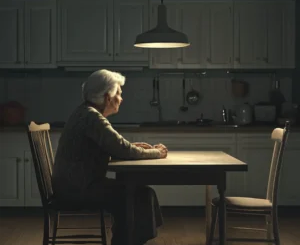
An orphan colt whose mother died shortly after giving birth has a new mom – a mare that had tragically lost her foal – thanks to the generosity of strangers and Washington State University veterinarians playing matchmaker.
Pairing an orphan foal and a nursing mare is a challenging task and one that commonly ends with failure. In this case, the connection was instantaneous.
“The mare had only been without a foal for about 24 hours,” Dr. Lisbeth Matthews, an equine medicine and surgery intern, said. “We walked her into the Veterinary Teaching Hospital and past him. He made a noise, and she went, ‘oh, there’s my foal,’ and started making noises back at him.”
It was a surprise to everyone how quickly the mare, named Shelly but affectionally called Mama by her owners, Roy and Faye Lions, accepted the colt. Equine veterinarian Jenifer Gold, who was helping to care for the foal and to supervise its introduction to the mare, said nursing mares frequently reject orphan foals, and when they don’t, the pairing process often takes days.
“She walked in and started nickering at him like it was her own baby – it was unbelievable,” Gold said. “I’ve been doing this for 20 years, and I have never seen it happen that way.”
The foal, which has been named Laredo, was admitted to the teaching hospital by his owner, Spokane resident Rachel Williams, just days after he was born when he started showing troubling digestive issues. Shortly after the colt arrived in Pullman, Faye Lions placed a call to WSU to see if the equine team was aware of any orphan colts needing a nursing mare.
“Our foal was dead, and nothing was going to bring it back, so we were hoping we could help someone else,” Faye Lions said. “It just so happened there was a foal there.”
A day later, the colt and Shelly were introduced.
“For them to be so willing to basically hand over their animal to a complete stranger after experiencing their own tragedy was pretty phenomenal,” Williams said. “I feel like in this scenario it was the worst of the worst for everybody, but there was a little bit of silver lining to the story.”
Williams is also grateful for the care and treatment she and her foal received at WSU.
“I just can’t even find words to say how great the veterinarians at WSU were,” she said. “They went above and beyond. I am just happy I ended up at WSU. I am so glad we were able to match those two up – it is kind of a miracle.”
Shelly will live with Williams until the colt is ready to be weaned, likely in six months, before she will return to her home in Kamiah, Idaho.
“It will be tough to say goodbye because you just naturally start to bond with animals, and she has kind of been my lifesaver,” Williams said. “It will be bittersweet for sure, but I am sure her owners will be happy to have her back.”
During the spring, the equine team at WSU typically sees at least a handful of orphan foals. Equine medicine specialist Dr. Macarena Sanz said orphan foals can be fed a powdered milk formula designed for horses, but those raised by humans typically develop behavioral issues that can become problematic as the animal matures.
“They turn out to be socially weird, have no understanding of personal space, and they are more difficult to train,” WSU equine veterinarian Macarena Sanz said. “The fact that this orphan foal has a mare is really going to make a difference.”
Sanz strongly encourages owners to immediately call their veterinarian if a foal is orphaned, as early care is critical to the animal’s survival.
Hilarious clip from a long-lost episode of The Carol Burnett Show
This hilarious clip from a long-lost episode of The Carol Burnett Show starring Tim Conway and Harvey Korman hasn’t been seen in aImost 40 years.

It’s brief, but it’s long enough to make anyone giggle.
The Carol Burnett Show was one of America’s most successful series during its first run, which lasted from 1967 through 1978. It has been on numerous «Best/Greatest TV Shows of All Time» lists and was consistentIy among the top 30 most-watched shows each season.
Tim Conway and Harvey Korman, two of the most well-known comedians of all time, were regulars on the show. Despite the fact that they were not a comic partnership Iike Abbott and Costello, they were frequently used in skits due to their popularity with viewers.
Tim dresses up as a lady in this episode, which is only available on DVD, and he and Harvey go undercover as a couple. Tim warns Harvey not to hold her too closely, but Harvey insists that they must appear to be a reaI pair in order to complete the task.
Tim concurs, adding it’s great as long as they remain professional. Now it becomes very funny: Harvey can’t fathom why Tim would assume this was for anything other than work.
Tim then flicks his hair like the comedic genius that he is, causing both performers to break character and giggle, though they try to keep it in as much as they can. The audience isn’t much assistance either; everyone in the studio was Iaughing at this point.
Harvey combs his bangs before pulling out his compact powder and rubbing it on his mustache and chin, making everyone, including Harvey, laugh even harder.



Leave a Reply